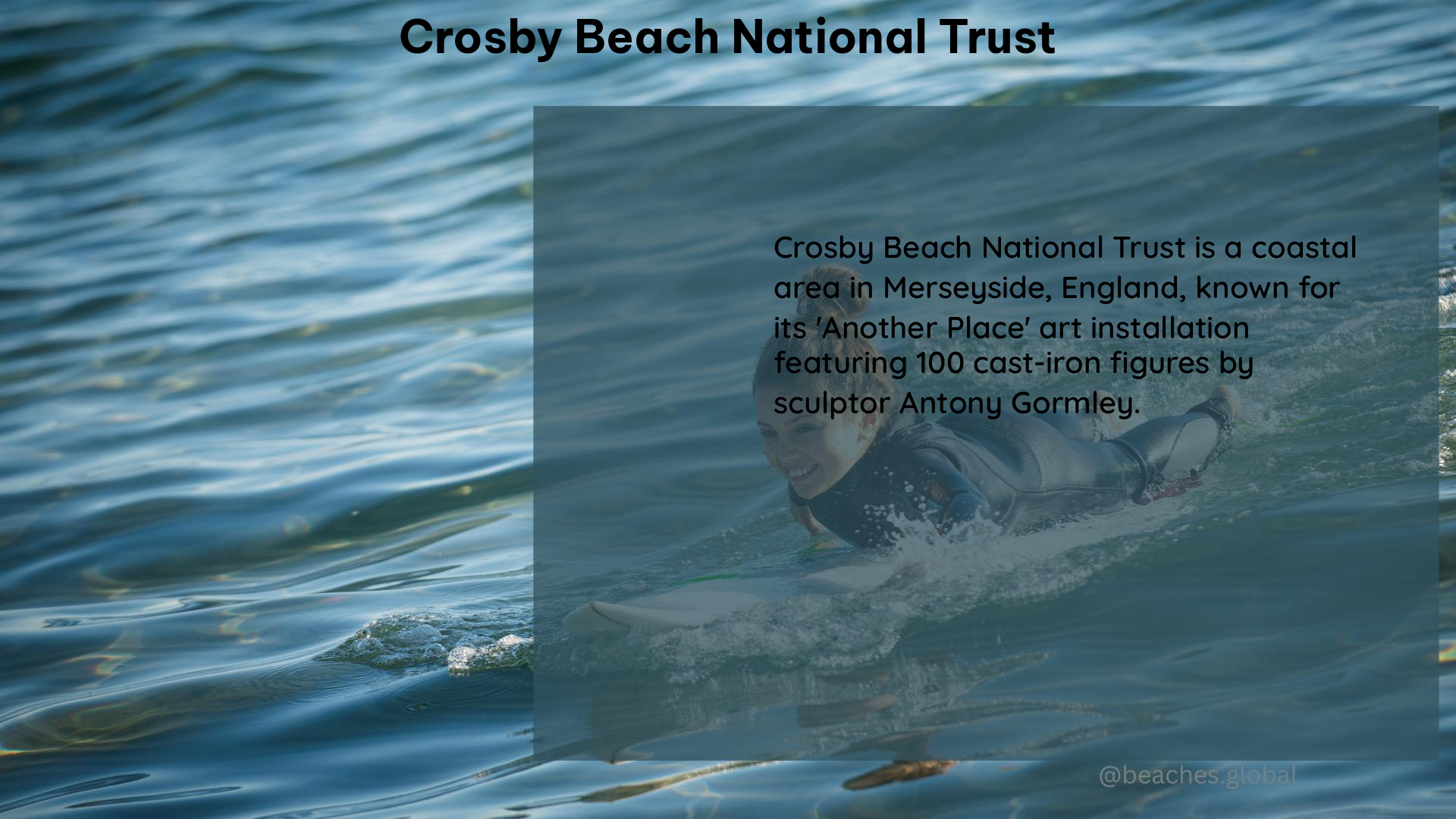Crosby Beach, located in the Metropolitan Borough of Sefton, Merseyside, England, is a captivating destination that offers a unique blend of natural beauty, historical significance, and recreational opportunities. While Crosby Beach is not directly managed by the National Trust, it is situated near Formby Beach, which is under the Trust’s care, making it a must-visit destination for beach enthusiasts.
Location and Accessibility
Crosby Beach is situated approximately 10 miles north of Liverpool city center, making it easily accessible for visitors. The beach can be reached via the Lifeboat Road car park, which is managed by the National Trust. The car park offers accessible toilet facilities and mobility car park spaces, ensuring a comfortable experience for all visitors.
Parking and Timings

While Crosby Beach itself does not have specific parking or entry fees, the nearby Lifeboat Road car park and Victoria Road beach car park are managed by the National Trust. Parking fees are as follows (Gift Aid / Standard): Car – £8.50 / £8.50, Coach – £75.00 / £75.00, Horse box – £20.00 / £20.00, Mini bus – £20.00 / £20.00. The car parks are open from 09:00 to 17:00, and the toilets at both car parks are open from 10:00 to 16:30.
Dog-Friendly Destination
Crosby Beach is a dog-friendly destination, allowing visitors to explore the sandy beaches and acres of woodland with their beloved pets. This makes it an ideal spot for families and pet owners to enjoy a day out in the great outdoors.
Nature and Wildlife
Crosby Beach and its surrounding areas are home to a diverse array of wildlife, including the iconic red squirrel and the natterjack toad. The beach is also known for its prehistoric footprints and two shipwrecks, adding to the area’s rich historical and natural heritage.
Volunteering and Conservation
The National Trust actively engages volunteers in conservation efforts at Formby Beach and other nearby locations. Opportunities for visitors to get involved include beach clean-ups, archaeological walks, and habitat restoration projects. By participating in these initiatives, you can contribute to the preservation and protection of the local environment.
Unique Features of Crosby Beach
One of the most distinctive features of Crosby Beach is the presence of the “Another Place” art installation, created by renowned sculptor Antony Gormley. This thought-provoking work consists of 100 cast-iron figures, each weighing over 650 kilograms, that are spread out along the shoreline, creating a striking and memorable visual experience for visitors.
Another unique aspect of Crosby Beach is the presence of prehistoric footprints that have been preserved in the sand. These ancient imprints, dating back thousands of years, offer a glimpse into the past and provide a fascinating insight into the history of the area.
Nearby Attractions and Amenities
While Crosby Beach is the main draw, the surrounding area offers a wealth of additional attractions and amenities for visitors to explore. Formby Beach, which is managed by the National Trust, is a popular destination for its sand dunes, pine forests, and diverse wildlife. The nearby town of Formby also boasts a range of shops, cafes, and restaurants, making it an ideal base for a day out.
Conclusion
Crosby Beach, with its stunning natural beauty, rich history, and unique features, is a must-visit destination for beach enthusiasts and nature lovers alike. Whether you’re looking to explore the area’s wildlife, participate in conservation efforts, or simply enjoy a peaceful day by the sea, Crosby Beach and the surrounding National Trust sites offer a truly memorable experience.
